It is Jan. 6, 2025, and the US president looks on in horror as his narrowly defeated rival calls on the armed forces to help overthrow the “fraudulent” election result.
The scene is from War Game, a new documentary premiering at the Sundance film festival on Tuesday in which real former government and military officials take part in an unscripted role-play exercise imagining another assault on the Capitol.
But for its directors, the scenario — which echoes the events of Jan. 6, 2021, except that this time, rogue police and soldiers defect to join protests, which spread nationwide — is not so far-fetched.
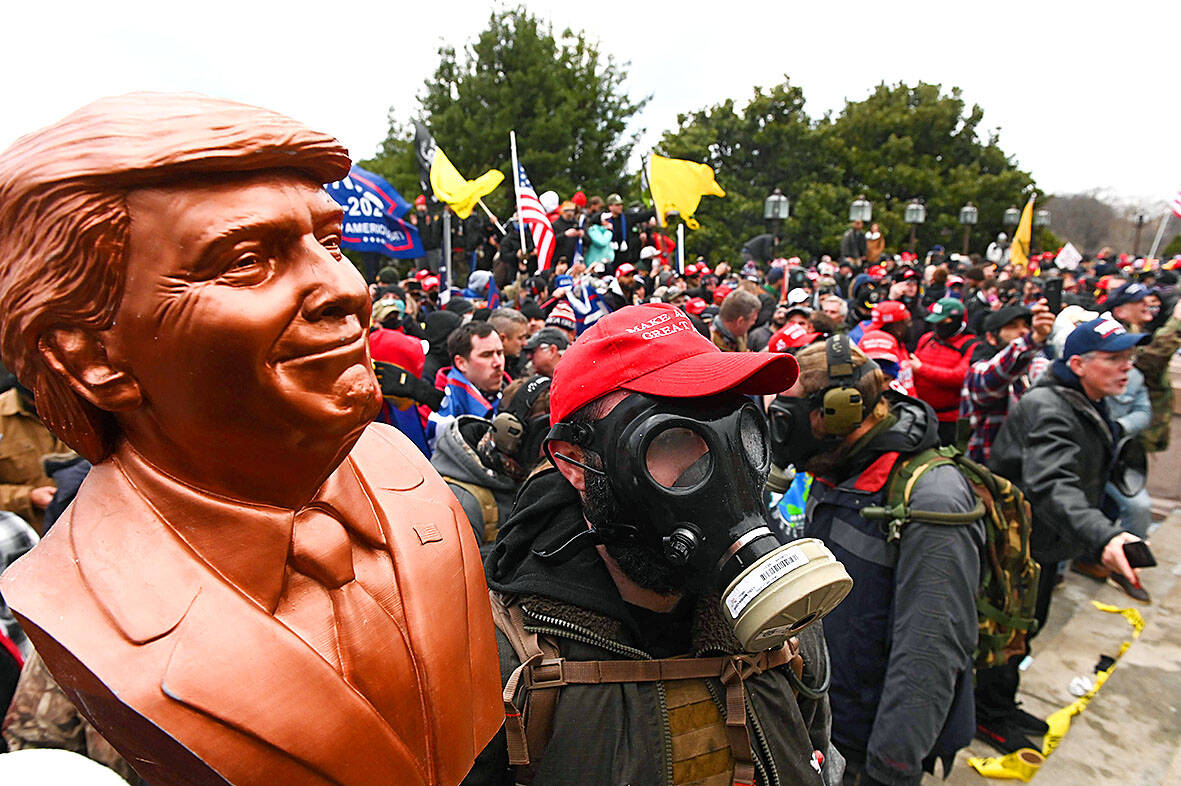
Photo: AFP
“It’s terrifying how timely the film continues to become,” said co-director Jesse Moss.
“And I do worry about how timely it may yet be one year from now.”
In the film, former Montana governor Steve Bullock assumes the role of US president, who has six hours to decide how to confront the rapidly escalating coup attempt.
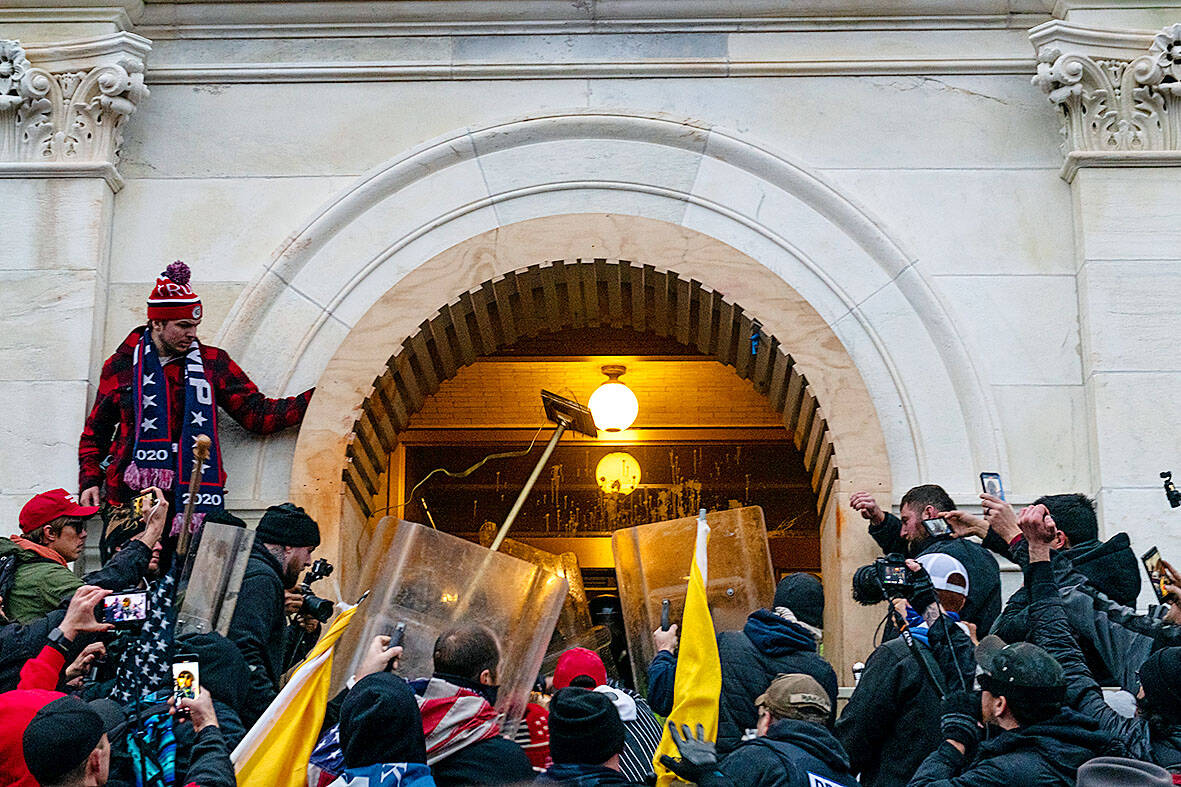
Photo: Bloomberg
His advisors are played by real-life US senators, FBI and CIA officers, military colonels and a former NATO commander.
They gather in an elaborate war room — the set was inspired by Stanley Kubrick’s Dr. Strangelove — and receive updates from intelligence briefings, social media and a fictional rolling news channel.
“This was, for six hours, a real experience for all of us,” Bullock said. “It was a stressful environment... nobody was thinking about the cameras being there,” he added.
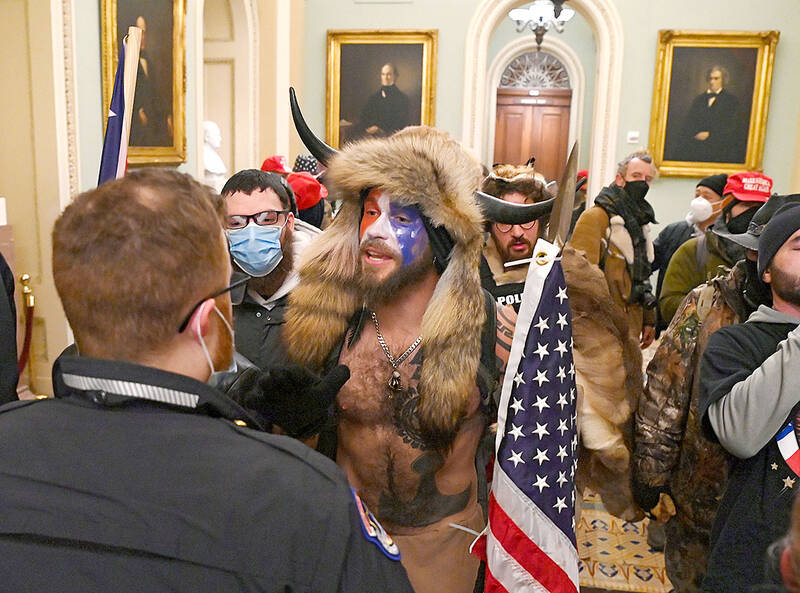
Photo: AFP
‘DISTURBING’
Simultaneously, a fictional paramilitary group called the “Order of Columbus,” played by former US veterans, are gathered elsewhere, sowing disinformation online and encouraging soldiers to break ranks.
The role-play exercise was originally inspired by a Washington Post op-ed written by three US generals in 2021, which warned of growing extremism within the armed forces, and urged the military to prepare for possible insurrection after this year’s election.
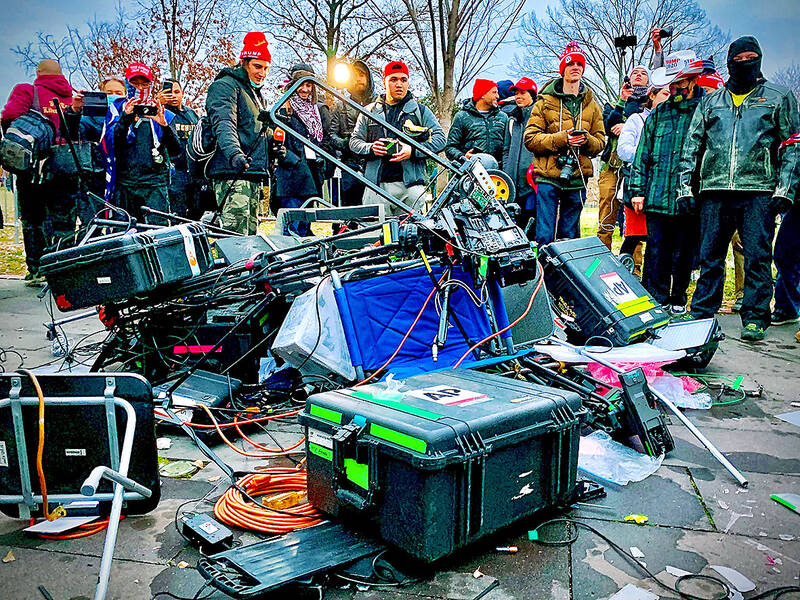
Photo: AFP
“A disturbing number of veterans and active-duty members of the military took part in the attack on the Capitol,” it read.
“The idea of rogue units organizing among themselves to support the ‘rightful’ commander in chief cannot be dismissed,” the generals wrote.
Vet Voice, a foundation representing US military veterans and their families, decided to undertake the exercise.
They agreed to allow cameras in for the documentary, and have provided a report on the exercise to the White House, Congress and the Pentagon.
“The only response they have received so far from the US administration is a ‘thank you,’” said Vet Voice CEO Janessa Goldbeck. “There are many folks in the administration who are working on this topic. But it’s controversial,” she said.
“There’s a lot of pushback that it’s disrespectful to our troops and to our veterans to talk about this issue,” Goldbeck added.
TRUMP
The premiere of War Game happened to fall on the day of the New Hampshire primary, where Donald Trump trounced his sole remaining challenger and moved closer to sealing the Republican presidential nomination.
And while War Game uses fictional candidates, the former president’s influence on the proceedings is hard to escape.
At one point, during a discussion on whether to invoke the Insurrection Act — which allows the president to use federal troops to enforce the law — the former president’s name is mentioned by two “advisors.”
Trump has hinted at an expanded role for the military within the US if he wins a second term.
And he faces trial for conspiring to upend the result of the 2020 election, which he lost to Joe Biden.
The movie’s directors point out that Trump was “on the periphery” when they filmed the role-play exercise just over a year ago, and that bipartisan figures from both sides of the aisle took part.
The forces that drove the events of January 6, 2021, such as political polarization and “the alternative reality that some people seem to inhabit... transcend Donald Trump,” said Moss.
“But Trump has moved front and center,” he said.
“And I think the threats that we dramatize in the film are acute, are terrifying, are very real.”
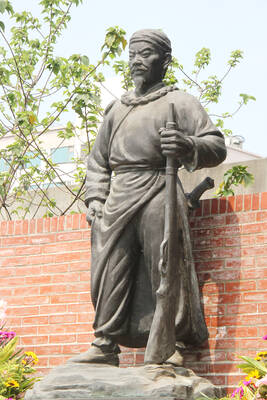
JUNE 30 to JULY 6 After being routed by the Japanese in the bloody battle of Baguashan (八卦山), Hsu Hsiang (徐驤) and a handful of surviving Hakka fighters sped toward Tainan. There, he would meet with Liu Yung-fu (劉永福), leader of the Black Flag Army who had assumed control of the resisting Republic of Formosa after its president and vice-president fled to China. Hsu, who had been fighting non-stop for over two months from Taoyuan to Changhua, was reportedly injured and exhausted. As the story goes, Liu advised that Hsu take shelter in China to recover and regroup, but Hsu steadfastly

Taiwan’s politics is mystifying to many foreign observers. Gosh, that is strange, considering just how logical and straightforward it all is. Let us take a step back and review. Thanks to the Chinese Nationalist Party (KMT) and the Taiwan People’s Party (TPP), starting this year people will once again have Christmas Day off work. In 2002, the Scrooges in the Democratic Progressive Party (DPP) said “bah, humbug” to that. The holiday is not actually Christmas, but rather Constitution Day, celebrating the enactment of the Constitution of the Republic of China (ROC) on December 25, 1947. The DPP and the then pan-blue dominated legislature
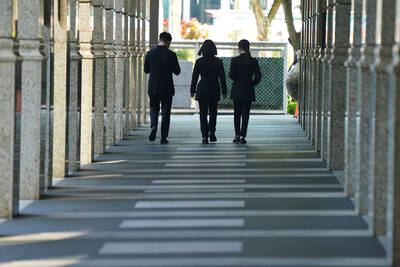
Focus Taiwan reported last week that government figures showed unemployment in Taiwan is at historic lows: “The local unemployment rate fell 0.02 percentage points from a month earlier to 3.30 percent in May, the lowest level for the month in 25 years.” Historical lows in joblessness occurred earlier this year as well. The context? Labor shortages. The National Development Council (NDC) expects that Taiwan will be short 400,000 workers by 2030, now just five years away. The depth of the labor crisis is masked by the hundreds of thousands of migrant workers which the economy absolutely depends on, and the

If you’ve lately been feeling that the “Jurassic Park” franchise has jumped an even more ancient creature — the shark — hold off any thoughts of extinction. Judging from the latest entry, there’s still life in this old dino series. Jurassic World Rebirth captures the awe and majesty of the overgrown lizards that’s been lacking for so many of the movies, which became just an endless cat-and-mouse in the dark between scared humans against T-Rexes or raptors. Jurassic World Rebirth lets in the daylight. Credit goes to screenwriter David Koepp, who penned the original Jurassic Park, and director Gareth Edwards, who knows